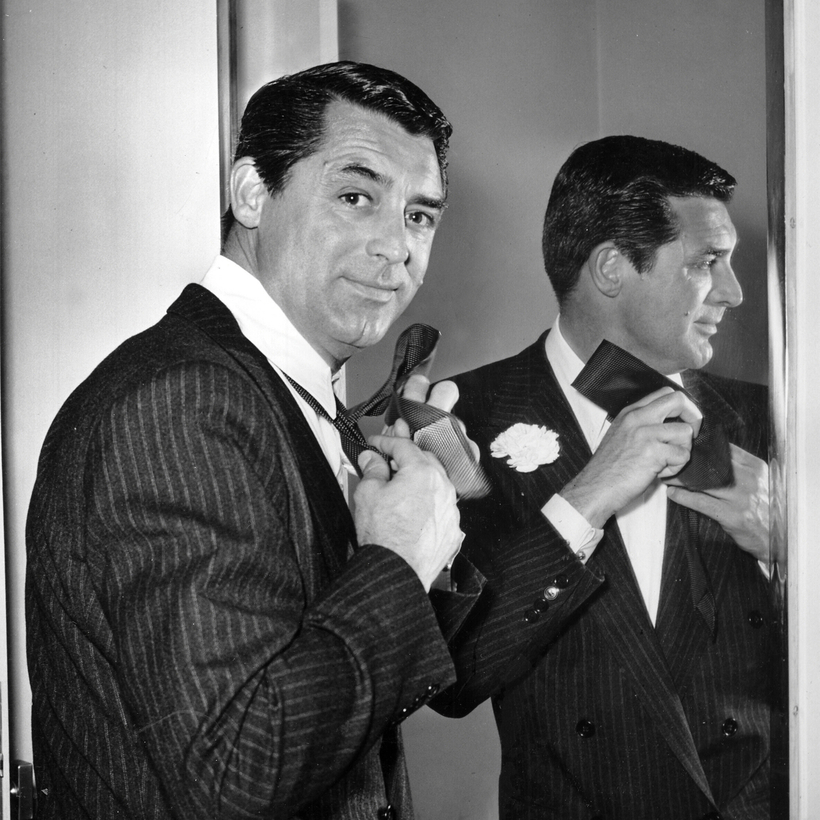A CLEAN SHAVE
The beard has been having quite a moment as a facial flex for men who like to signal their virility. I feel like I’m in the minority who actually enjoy shaving (my face, that is). It’s one of those refinements that separate us from creatures with four legs.
The ritual is a solemn one, and I like to take my time. After choosing the right soundtrack to play on the bathroom speaker, which can be NPR, a podcast, or a Miles Davis album, I prepare the three essentials of a good shave: clean, moist, warm skin; a luxurious, creamy lather; and a sharp blade. With the right tools, what many men regard as a burden becomes a supreme pleasure.
I wash with Dr. Bronner’s Pure Castile Soap, which gives a really good clean without stripping oils from the skin. Then I whip a quarter-size dollop of Proraso Shaving Cream into a rich lather in my palm and apply it evenly to my face with a synthetic silver-tip shaving brush from New York’s finest pharmacy, C. O. Bigelow. (The synthetic brush is super-soft, rinses easily, and harms no animals.)
One of the many reasons to love Proraso’s Shaving Cream, which has been made in Italy since 1948, is that it comes in a metal tube with no plastic waste. And the eucalyptus oil and menthol in the cream provide a refreshing feeling and a crisp scent. For cheap kicks, I like to use a roller key that winds up the tube from the bottom, so none of the product goes to waste.
When it comes to the shave itself, my preferred instrument is a safety razor with a double-edged blade. The timeless, all-metal design was invented in the early 20th century by King Camp Gillette, a utopian socialist who patented a safe and effective shaving system to avoid prohibitive cost and excessive waste. Even today, blades cost less than $10 a year and are environmentally friendly. In a capitalistic stroke of fate, Gillette had a contract to supply American soldiers with razors during W.W. I. When the troops returned home, they were hooked, and the built-in demand ensured Gillette’s dominant market position.
The shave takes some getting used to if you’re coming from a multi-blade cartridge system. But once you get the swing of it, there’s no going back.
LONG LIVE THE NECKTIE
Like a clean shave, the necktie is an endangered component of the male presentation. As recently as 10 years ago, men on the streets of New York or in shows and movies about real stylish players wore ties with their crisp shirts and suits. Not anymore. The tailored jacket has been replaced with the shapeless, flaccid zip-up vest in sex-repellent fleece or quilted nylon, and the necktie has gone into the witness-protection program. Good-bye, Beau Brummell. Hello, Bro Bummer.
One of the most unfortunate looks to emerge in this era is the suit-with-dress-shirt-but-no-tie look. In the last season of Succession, I observed a near total absence of ties on Kendall and Roman, even at their brother Connor’s ill-fated wedding. The costume designer wasn’t making a statement, but casting a reflection on the sorry state of men’s dress. Even newscasters have been ditching the tie. But instead of looking like part of a younger, cooler generation who shun old-timey neckties, a guy in a suit without a tie looks unfinished, incomplete, or worse: like an old president trying to look casual and relaxed at Camp David on the weekend. And that’s an American tragedy.
The necktie is purely decorative and totally useless, like jewelry and, now that we have smartphones, watches. But our reasons for dressing have never been purely utilitarian. We dress to express and decorate ourselves, for better and for worse. The bracelets and beads popular with many men are functionally pointless but can add a nice splash of style in the right doses. And, if we’re being honest, a baseball cap worn at night by anyone other than a player serves little to no purpose, especially when worn backwards.
I recently had the pleasure of serving as master of ceremonies for a dinner held by Hermès. The purpose of the event was to celebrate the tie and Hermès’s contributions to the world of luxury neckwear. The invitees (and the staff at the Odeon that night) looked fabulous in their ties, either worn with traditional knots or more creative flourishes. It gave me hope.
With everybody trying to look as casual and unglamorous as humanly possible in adult versions of toddler clothes, the real gangster move now is to swing the pendulum in the other direction. Wearing a suit and tie, especially if you don’t have to, is a great way to do it. Director Paul Feig wears one on set; rock icon Bryan Ferry wears one on stage and off; and I wore one every day as a concierge for a cosmetic dermatologist. Luxury should not be stealthy or quiet; it should be just the right volume.
GET FURTHER WITH A FLIRT THAN WITH A FIGHT
In competitive cities like New York, there’s an urban myth that to get what you want, you have to grit your teeth, clench your fists, and approach every encounter like it’s a battle. Whether they’re ordering coffee from a barista, asking a maître d’ for a table, or paying a cashier at a bodega, many city slickers think that being a hard-ass is the best way to get what they want. My experience on both sides of such transactions suggests otherwise.
This should be obvious, but striking a belligerent posture with someone who is trying to help you get a seat on an airplane or a table at a restaurant will probably work against you, and it tends to make more enemies than allies. This isn’t war—it’s dinner.
As a longtime veteran of the service industry, I’ve seen quite a bit. And even though it went against my employer’s code, I always secretly gave preferential treatment to people who brought a flirtatious mirth or had a certain twinkle in the eye, simply because it brought a welcome lift to a hectic, and often otherwise joyless, night.
A flirt needn’t be anything more than a flirt. We’re not sealing a deal or making any promises with it. It’s just a passing pleasantry with a slight charge to it. I do it all the time, with men and women. Recently, during the Saturday lunch rush at Balthazar, I approached the maître d’ with a shy smile and said, “This is the part where you tell me ‘George, that’s ridiculous and you’re crazy,’ but … do you have any room for two?” She laughed, took my name, and invited me and my friend to wait at the bar. Five minutes and one espresso later, we were escorted to a corner table.
Life is hard enough and our time is so short, why waste your vitriol on people who don’t deserve it? It’s so much more fun to flirt. And you just might get that aisle seat you asked for.
George Hahn is a humorist, entertainer, and writer living in New York


